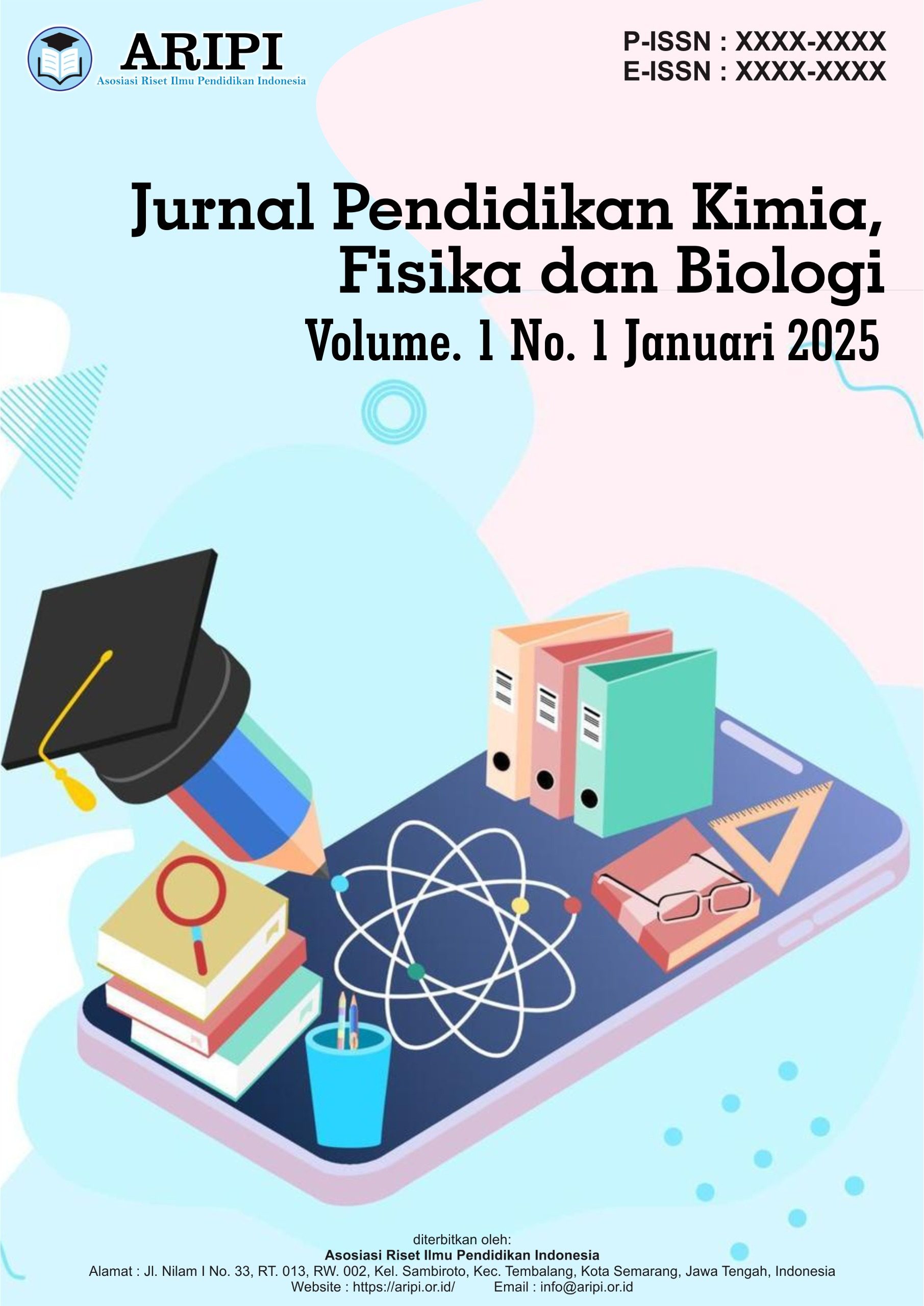Pengaruh Model Problem-Based Learning terhadap Hasil Belajar Siswa pada Materi Gaya dan Gerak
DOI:
https://doi.org/10.61132/jupenkifb.v1i1.167Keywords:
force and motion, learning outcomes, active learning, Problem-Based Learning, physics educationAbstract
This study aims to analyze the effect of problem-based learning (PBL) models on student learning outcomes in the material of force and motion. This study used a quasi-experimental method with a pretest-posttest control group design. The research sample consisted of junior high school students who were divided into an experimental group with the PBL model and a control group with conventional learning. The results showed that students who learned with the PBL model had a deeper understanding of concepts and were able to apply concepts in solving everyday problems compared to the control group. The implications of this study confirm that the application of PBL can improve students' learning outcomes and critical thinking skills in physics learning.
References
Albanese, M. A., & Mitchell, S. (1993). Problem-based learning: A review of literature on its outcomes and implementation issues. Academic Medicine, 68(1), 52-81.
Arends, R. I. (2012). Learning to teach. McGraw-Hill.
Arikunto, S. (2015). Prosedur penelitian: Suatu pendekatan praktik. Rineka Cipta.
Barrows, H. S. (1986). A taxonomy of problem-based learning methods. Medical Education, 20(6), 481-486.
Belland, B. R., Walker, A. E., & Kim, N. J. (2017). A Bayesian network meta-analysis to synthesize the influence of context variables on PBL effectiveness. Educational Psychology Review, 29(6), 973-999.
Cohen, L., Manion, L., & Morrison, K. (2018). Research methods in education. Routledge.
Creswell, J. W. (2014). Research design: Qualitative, quantitative, and mixed methods approaches. SAGE Publications.
Dolmans, D. H., De Grave, W., Wolfhagen, I. H., & van der Vleuten, C. P. (2005). Problem-based learning: Future challenges for educational practice and research. Medical Education, 39(7), 732-741.
Fraenkel, J. R., & Wallen, N. E. (2012). How to design and evaluate research in education. McGraw-Hill.
Hake, R. R. (1998). Interactive-engagement vs. traditional methods: A six-thousand-student survey of mechanics test data for introductory physics courses. American Journal of Physics, 66(1), 64-74.
Hmelo-Silver, C. E. (2004). Problem-based learning: What and how do students learn? Educational Psychology Review, 16(3), 235-266.
Jonassen, D. H. (2011). Learning to solve problems: A handbook for designing problem-solving learning environments. Routledge.
Loyens, S. M., Kirschner, P. A., & Paas, F. (2011). Problem-based learning. Learning and Instruction, 20(4), 287-292.
Mazur, E. (2009). Farewell, lecture? Science, 323(5910), 50-51.
Norman, G. R., & Schmidt, H. G. (2000). Effectiveness of problem-based learning curricula: Theory, practice and paper darts. Medical Education, 34(9), 721-728.
Prince, M. J., & Felder, R. M. (2006). Inductive teaching and learning methods: Definitions, comparisons, and research bases. Journal of Engineering Education, 95(2), 123-138.
Savery, J. R. (2006). Overview of problem-based learning: Definitions and distinctions. Interdisciplinary Journal of Problem-Based Learning, 1(1), 9-20.
Schmidt, H. G. (2012). A review of the evidence on PBL. Advances in Health Sciences Education, 17(4), 649-663.
Schmidt, H. G., Rotgans, J. I., & Yew, E. H. (2011). The process of problem-based learning: What works and why. Medical Education, 45(8), 792-806.
Strobel, J., & van Barneveld, A. (2009). When is PBL more effective? A meta-synthesis of meta-analyses comparing PBL to conventional classrooms. Interdisciplinary Journal of Problem-Based Learning, 3(1), 44-58.
Sugiyono. (2018). Metode penelitian kuantitatif, kualitatif, dan R&D. Alfabeta.
Tan, O. S. (2003). Problem-based learning innovation: Using problems to power learning in the 21st century. Thomson Learning.
Vygotsky, L. S. (1978). Mind in society: The development of higher psychological processes. Harvard University Press.
Wood, D. F. (2003). ABC of learning and teaching in medicine: Problem-based learning. BMJ, 326(7384), 328-330





